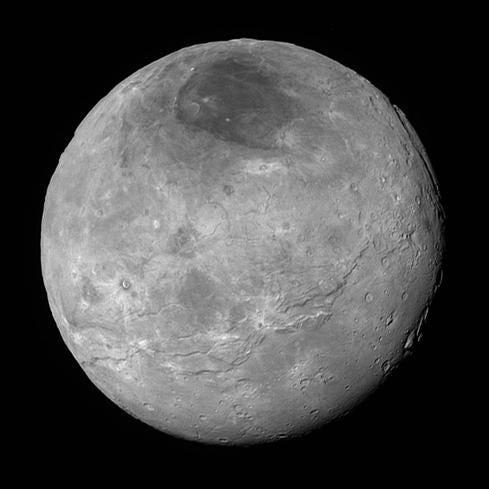NASA Paper Reveals Pluto's Striking Diversity, ComplexityNASA Paper Reveals Pluto's Striking Diversity, Complexity
Detailed information and theories concerning Pluto's birth and evolution are all covered in an in-depth research report NASA published in Science that relies in information provided by the New Horizons probe.


NASA's New Horizons Transmits New Pluto, Charon Images
NASA's New Horizons Transmits New Pluto, Charon Images (Click image for larger view and slideshow.)
The dwarf planet Pluto continues to impress scientists and the general public alike as NASA's New Horizons spacecraft beams back more photos and information about the small celestial body and its moons.
Now, the space agency is revealing a slew of new information through the first research paper on Pluto, which appears as the cover story in the Oct. 16 issue of Science, just three months after NASA's historic first exploration of the Pluto system in July.
While the article is far more technical than your average space enthusiast may be able to understand easily, it provides a wealth of detailed scientific information about Pluto, including atmospheric conditions, surface composition, and geology.
Led by mission principal investigator Alan Stern, the report, "The Pluto System: Initial Results From Its Exploration by New Horizons," includes details about the diverse geology and apparent recent activity that raise fundamental questions about how small planetary bodies remain active many billions of years after formation.
Some of the processes on Pluto appear to have occurred recently, in geological time, including those that involve the water-ice-rich bedrock, as well as the more volatile, and presumably more mobile, ices of the western lobe of Pluto's "heart," a 1,000-mile-wide feature stretching across the planet's equator.
"The Pluto system surprised us in many ways, most notably teaching us that small planets can remain active billions of years after their formation," Stern, with the Southwest Research Institute (SwRI), wrote in a statement. "We were also taught important lessons by the degree of geological complexity that both Pluto and its large moon Charon display."
The New Horizons spacecraft completed a close approach to the Pluto system. It carried a sophisticated suite of scientific instruments that collected more than 50 gigabits of data on the Pluto system near the time of the spacecraft's closest approach.
The data returned so far show a surprisingly wide variety of landforms and terrain ages on Pluto, as well as variations in color, composition, and surface reflectivity.
Team members also discovered evidence for a water-ice-rich crust, multiple haze layers above the surface in Pluto's atmosphere, and that the dwarf planet is somewhat larger and a bit more ice-rich than expected.
[Read about New Horizons is bringing Pluto into focus.]
The report also noted the sizes of Pluto's small satellites, Nix and Hydra, which were measured for the first time. The two have higher surface reflectivity than Pluto's largest moon Charon, though scientists are still unsure why.
The New Horizons spacecraft reached a distance of 7,750 miles from Pluto's surface during its closest approach July 14, and gathered so much data it will take almost a year to return it all to Earth.
"The New Horizons mission completes our initial reconnaissance of the solar system, giving humanity our first look at this fascinating world and its system of moons," Jim Green, director of planetary science at NASA Headquarters in Washington, said in a statement. "New Horizons is not only writing the textbook on the Pluto system, it's serving to inspire current and future generations to keep exploring -- to keep searching for what's beyond the next hill."
About the Author
You May Also Like






